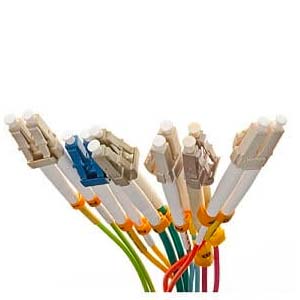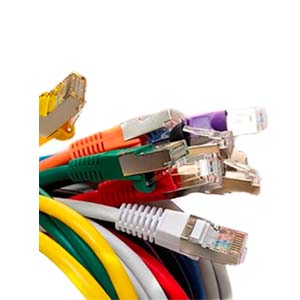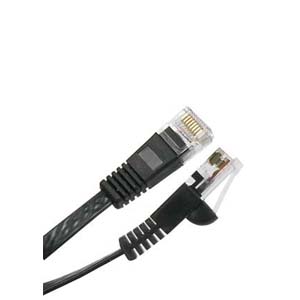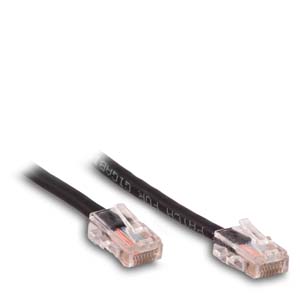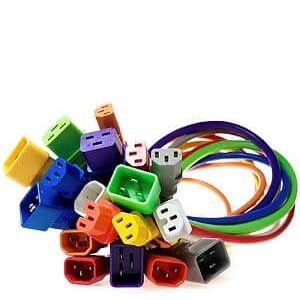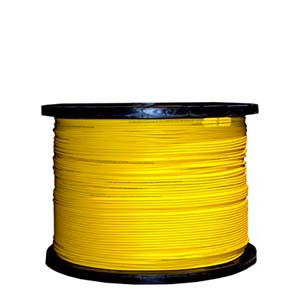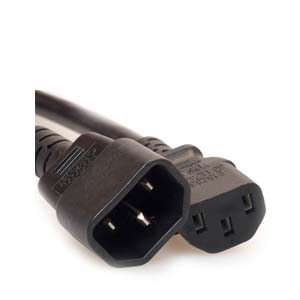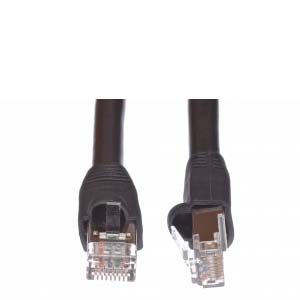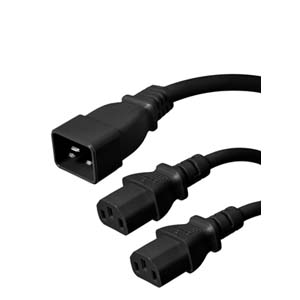Shop Cables for Sale - Fiber Optic Cables, Network Cables, Outdoor Cables, Bulk Ethernet Cables, Cat6 Cables, Cat5 Cables, Cat5e Cables, Crypto Cables and Data Center Cables.
The Importance of Proper Cable Management
by VIKAS DAYAL • April 16, 2020
Fiber Optic Cables, Custom Fiber Optic Cables, Cables.com
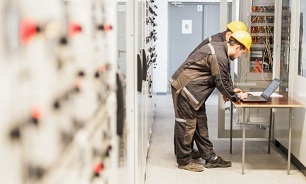
Cable management is a shorthand way to describe how installers and network engineers organize cables and hardware to enable troubleshooting, ease of identification, and to facilitate upgrades. It is shorthand for how cables connect within cabinets or along racks in a datacenter or telecom room. It is difficult to overstate the importance of proper cable management to network operations.
Safety
The most basic benefit of cable management is safety. A spaghetti bowl of cable lying around floors and dangling off racks is a trip hazard to anyone who must move around to connect or reconfigure network hookups. Tangled cables can overheat or spark, causing a fire. Proper cable management helps mediate these hazards, reducing the risk of injury and property damage.
Proper cable management addresses safety with floor cord covers, wire guides, and cable loom tubing. These cover cables that must run across floors, gather cables under desks inside tubes, or separate and guide them for easy identification as they run from the ports where they connect to hardware down, up, or across cabinets and racks to connections at their opposite end.
Efficiency
Cable management involves organizing and labeling cables that connect network hardware together. Cable management components may include hooks, ties, tubing and conduit, and wire management panels that keep cables from tangling and crisscrossing. These bars and panels resemble components of a loom that keep individual threads separate and straight and ensure they travel along the correct path to play their role in a carpet’s final weave. Installers and infrastructure designers use these accessories to keep cables running in the right direction; to keep them from crimping, twisting, or bending unnecessarily; and to enable visual organization. These tools that keep cables separated and sorted make it much easier to identify which cable might be the source of a connection problem or failure. Cable management saves technicians hours of time that might otherwise be spent tracing the course of a cable from connection to termination all along the network infrastructure. With proper cable management, cables are neat, sorted, labeled, and accessible to facilitate troubleshooting, upgrades, replacement, or repair.
Airflow
Data centers and network equipment closets require adequate airflow to keep components from overheating and malfunctioning. Excessive heat can damage network hardware. Cable management helps prevent “air damming,” or the stagnation of air around network components, which can happen when cables twist, coil, and pile around each other in a disorganized snake’s nest of cords. Organizing cables with ties and guides creates airspace around them, allowing air to continue to flow and mitigating the potential for overheating.
Tidiness and Professionalism
Even if you’re running a start-up in your garage, neatness counts. Customers and investors will not see the charm in a jumble of jerry-rigged components on folding tables coated with a spider web of cabling that spills from table to floor and crawls up and across exposed studs and beams. Getting cables organized into a proper cable management configuration looks neater and more professional. Additionally, cable management facilitates cleaning. It’s easier to wipe dust off cables you can see from all angles.
Product Life
Saggy cables can fail more quickly than cables supported within guides, ties, hangers, or mounts. Repetitive pulling, tugging, and detangling take a toll on even the sturdiest cables. Twisting, coiling, and bending also can reduce a cable’s useful life. Proper cable management keeps cables as straight as possible, bends them in an organized, gentle way when necessary, and can minimize overheating that damages the interior of traditional, twisted-pair copper cables.
Power Management
Cable management allows separation of network cables from power cords, and easier identification of cables that provide “power of internet.” Proper cable management prevents the nightmare scenario of simultaneously searching for or trying to trace intermingled network and power cables. Vertical and horizontal cable management accessories help separate cables that supply power from those that distribute network signals throughout the data center or network room.
Network Infrastructure Adaptability
Good cable management practices facilitate adaptability for upgrades and expansion in data centers or other network environments. Ideally, network designers create and fully map the network infrastructure before installers unpack their first piece of hardware or box of Ethernet cables.
Structured cabling systems anticipate possible future reconfiguration of workspaces and equipment. Adding capacity and expanding a network’s range may require copper or fiber optic patch cables to extend connectivity or accommodate repurposed spaces, whether cabling runs vertically, within walls between floors, or horizontally under floors or within ceilings. Cable management ensures that installing patch cable to connect new hardware to an existing network will be faster, easier, and more efficient. If cables are organized, labeled, color coded, and accessible, adding a new connection can become a matter of minutes, rather than hours.
Network infrastructure designers recognize the importance of proper cable management from planning through installation. The specific kinds of cable management accessories employed in any individual installation will vary depending on the data center’s size and complexity. Terminations, switches, racking, and cabinets all factor in to a detailed conception of cable management for any network configuration. Some installations may combine vertical with horizontal cable management and deploy bars, clips, racking, and cabling guides accordingly along floors and ceilings, within cabinets, or across the top of racking in aisles filled with hardware.
Whether you are constructing a new network, upgrading an existing one, or simply planning for future expansion, cable management should be part of your plan. Consider the types of network cables required, how much cable of what length you’ll need, and the number of ports or outlets available. Ventilation, power management, and accessibility for testing, troubleshooting, and repairs are all issues to consider. Once you know how much cable you need and what type, you can plan for the kinds of cable management accessories you’ll need to help keep all those wires organized, neat, clean, and in good operating condition. Many cable management systems combine vertical and horizontal cable management guides, along with zip ties, clips, conduit (“worms” or “looms”), and anticipate the need for patch cables and reconfiguration in the future.
Racking, cables, and cable management accessories are available to purchase online from Cables.com. If you’re unsure what kind of cable management tools will work best in your network environment, contact us, and we’ll be happy to help determine what kind of accessories might help you set up the proper cable management that is so important for your network.


